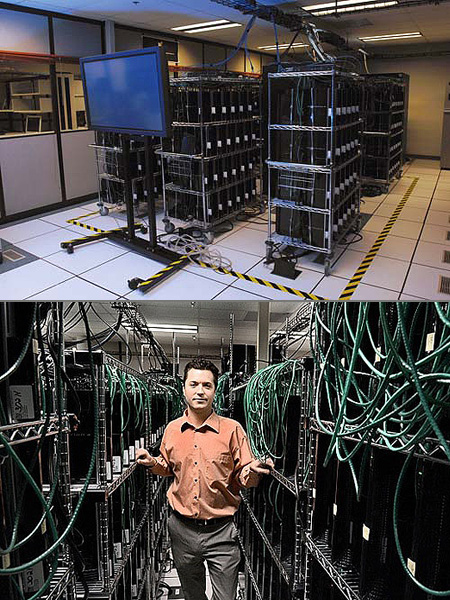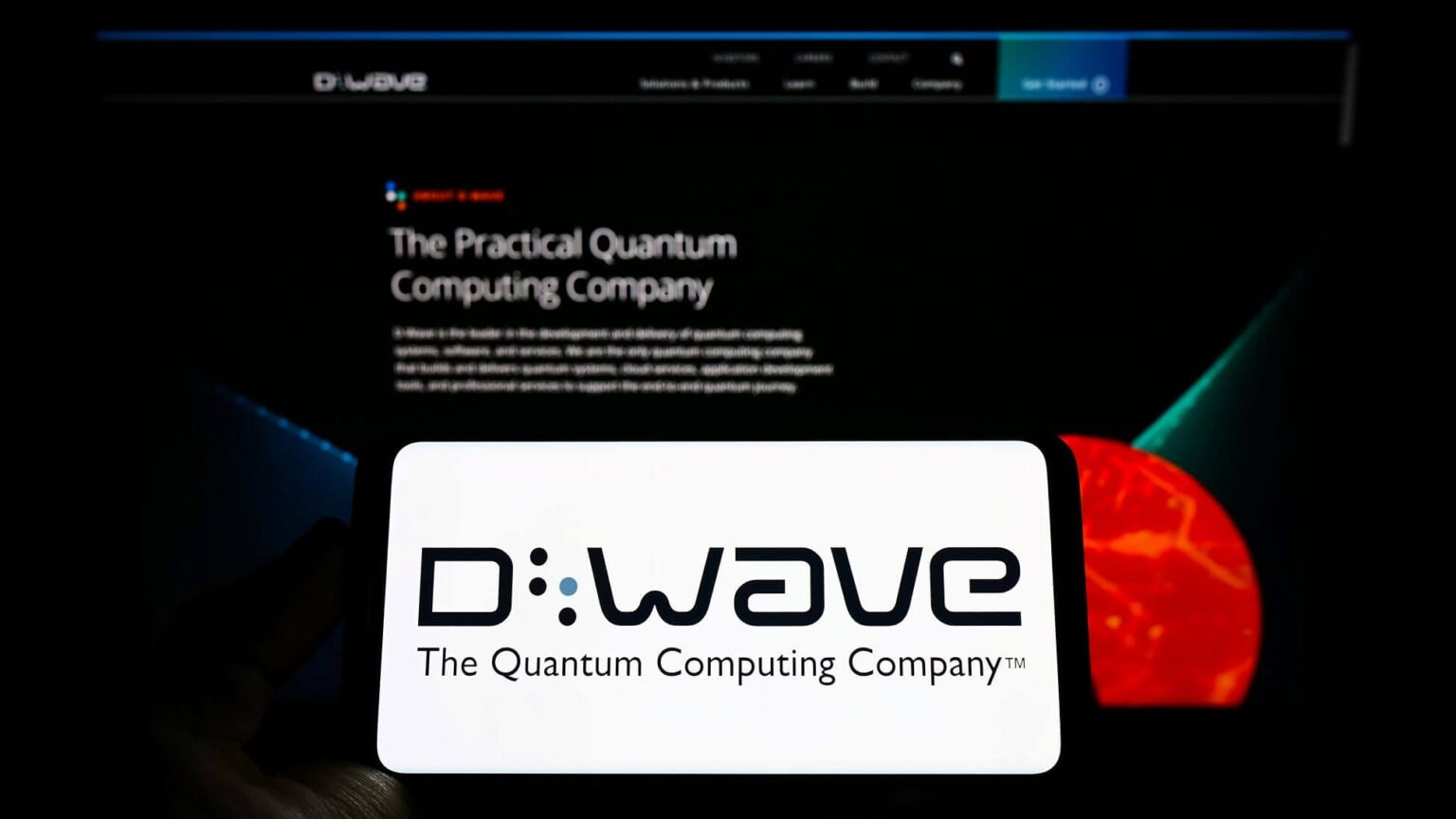China's Ambitious Project: A Supercomputer In Orbit

Table of Contents
The Technological Challenges of a Space-Based Supercomputer
Building and launching a supercomputer into orbit presents unprecedented technological hurdles. The extreme environment of space demands innovative solutions in several key areas:
Extreme Environmental Conditions
Space presents a hostile environment for delicate electronics. The challenges are multifaceted:
- Radiation shielding: High-energy particles from the sun and cosmic rays can damage sensitive electronic components. Robust radiation-hardened components are crucial.
- Temperature fluctuations: Extreme temperature variations between sunlight and shadow require sophisticated thermal management systems to maintain optimal operating temperatures.
- Microgravity effects on hardware: The absence of gravity can affect the performance and reliability of certain components. Specialized designs are needed to mitigate these effects.
- Launch survivability: The immense G-forces experienced during launch necessitate incredibly durable and shock-resistant hardware.
Existing solutions involve using specialized materials like radiation-hardened silicon and developing advanced thermal control systems using heat pipes and radiators. Further advancements in materials science and engineering are essential to overcome these challenges and improve the longevity and reliability of space-qualified hardware.
Power and Data Transmission
Sustaining power and transmitting vast amounts of data from orbit are critical challenges.
- Power generation in space: Reliable and efficient power generation is essential. Options include large solar panel arrays and, potentially, nuclear power sources for extended missions.
- Efficient energy consumption: The supercomputer must be highly energy-efficient to maximize operational time and minimize the size and weight of power systems.
- High-bandwidth data transmission to Earth: Transmitting the massive amounts of data generated by a space-based supercomputer requires high-bandwidth communication links. Laser communication and advanced microwave links are promising technologies, though significant advancements are needed to meet the demands of such high data throughput.
Efficient satellite power systems and high-speed laser communication technology are vital to the success of this project. The limitations of current technologies necessitate substantial investment in research and development to achieve the necessary data transmission speeds.
Miniaturization and Component Reliability
Miniaturizing components while maintaining performance and reliability is crucial for a space-based supercomputer.
- Need for smaller, lighter, and more energy-efficient components: Reducing the size and weight of the supercomputer is critical for launch costs and overall mission success.
- Fault tolerance: The harsh space environment increases the risk of component failure. Fault tolerance mechanisms are essential to ensure continuous operation.
- Redundancy systems: Redundant systems are crucial to provide backup functionality in case of component failure.
High-reliability components and redundant systems are paramount. Advancements in miniaturized electronics and highly reliable designs are crucial to achieving the required levels of performance and longevity in this challenging environment.
Potential Applications and Benefits of a Space-Based Supercomputer
A space-based supercomputer has the potential to revolutionize various fields:
Scientific Research and Discovery
The immense processing power offered by a space-based supercomputer could dramatically accelerate scientific breakthroughs:
- Advanced simulations: It could enable highly detailed simulations in fields like climate modeling and astrophysics, offering unprecedented insights.
- Real-time data processing from space telescopes and satellites: It could process vast amounts of data from space telescopes and satellites in real-time, leading to faster discoveries.
- Faster scientific breakthroughs: The increased computational power will undoubtedly accelerate the pace of scientific research and discovery across numerous disciplines.
High-performance computing in space could revolutionize scientific simulation and data analysis, leading to significant advancements in our understanding of the universe and our planet.
Global Communications and Navigation
A space-based supercomputer could significantly enhance global communication and navigation systems:
- Improved global positioning systems (GPS): It could lead to more accurate and reliable GPS signals, benefiting various applications, from navigation to precision agriculture.
- Enhanced satellite communication networks: It could facilitate faster and more reliable satellite communication networks, improving global connectivity.
- Faster data transfer speeds worldwide: A strategically positioned space-based supercomputer could potentially dramatically increase data transfer speeds worldwide.
Improvements to the global navigation satellite system and advancements in satellite communication will have wide-ranging positive impacts on global connectivity and data transfer capabilities.
Artificial Intelligence and Machine Learning
The computational power of a space-based supercomputer would greatly benefit artificial intelligence and machine learning:
- Training of advanced AI models: It could train significantly more complex and powerful AI models than is currently possible.
- Real-time data analysis for AI applications: It could enable real-time data analysis for various AI applications, including autonomous space operations and Earth observation.
- Potential for autonomous space operations: This could lead to advancements in autonomous spacecraft and robotic missions, expanding the reach of space exploration.
The advancements in artificial intelligence, machine learning, and deep learning facilitated by a space-based supercomputer will likely lead to breakthroughs in autonomous systems and space exploration.
International Implications and Competition in Space-Based Computing
China's success in deploying a space-based supercomputer would have significant geopolitical implications, potentially triggering a new space race. Other nations, including the US, Europe, and Russia, are likely to accelerate their own research and development efforts in this field to maintain or gain a competitive edge. This technological competition will likely drive innovation and investment in space-based computing technologies globally, exacerbating the existing space race and its associated geopolitical implications.
Conclusion
China's ambitious project to launch a supercomputer in orbit represents a giant leap in space-based computing. While the technological challenges are immense, the potential benefits for scientific advancement, global communication, and the future of space exploration are equally significant. Overcoming the hurdles of radiation shielding, power generation, data transmission, and miniaturization will require substantial investment in research and development. However, the rewards of achieving this ambitious goal could reshape our world. Stay informed about this groundbreaking initiative and its potential to reshape our world. Follow further developments in China's space program and the field of space-based supercomputing.

Featured Posts
-
 Building Contamination Following Ohio Train Derailment A Toxic Chemical Investigation
May 20, 2025
Building Contamination Following Ohio Train Derailment A Toxic Chemical Investigation
May 20, 2025 -
 Nou Membru In Familia Schumacher Legendarul Pilot A Devenit Bunic
May 20, 2025
Nou Membru In Familia Schumacher Legendarul Pilot A Devenit Bunic
May 20, 2025 -
 Agatha Christies Endless Night A New Bbc Television Adaptation
May 20, 2025
Agatha Christies Endless Night A New Bbc Television Adaptation
May 20, 2025 -
 The Ultimate Guide To Solo Travel From Planning To Packing
May 20, 2025
The Ultimate Guide To Solo Travel From Planning To Packing
May 20, 2025 -
 Philippine Defense Strategy And The Typhon Missile System A Critical Assessment
May 20, 2025
Philippine Defense Strategy And The Typhon Missile System A Critical Assessment
May 20, 2025
Latest Posts
-
 D Wave Quantum Qbts Stock Market Performance A Deep Dive Into This Weeks Gains
May 20, 2025
D Wave Quantum Qbts Stock Market Performance A Deep Dive Into This Weeks Gains
May 20, 2025 -
 D Waves Quantum Leap Accelerating Drug Discovery With Ai And Qbts
May 20, 2025
D Waves Quantum Leap Accelerating Drug Discovery With Ai And Qbts
May 20, 2025 -
 Analyzing The Impact Of Qbts Earnings On Stock Price
May 20, 2025
Analyzing The Impact Of Qbts Earnings On Stock Price
May 20, 2025 -
 Why Did D Wave Quantum Qbts Stock Price Soar This Week
May 20, 2025
Why Did D Wave Quantum Qbts Stock Price Soar This Week
May 20, 2025 -
 Qbts Earnings Announcement What To Expect For Stock Price
May 20, 2025
Qbts Earnings Announcement What To Expect For Stock Price
May 20, 2025
